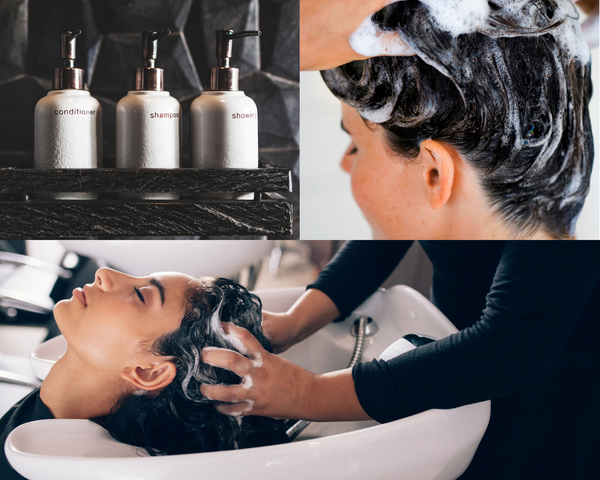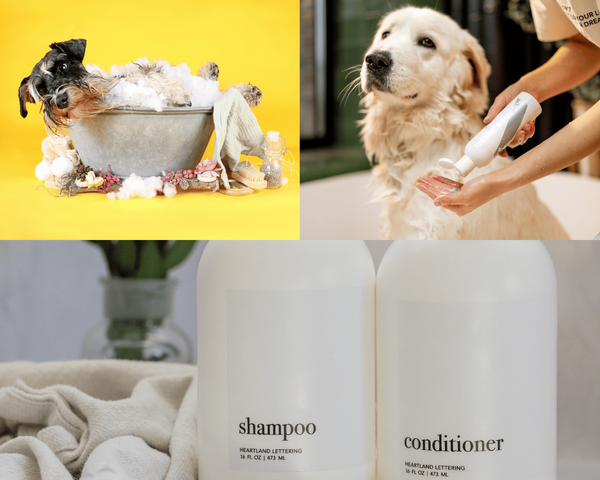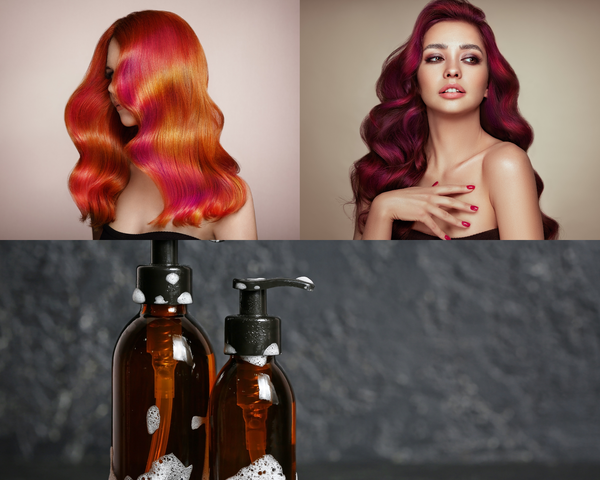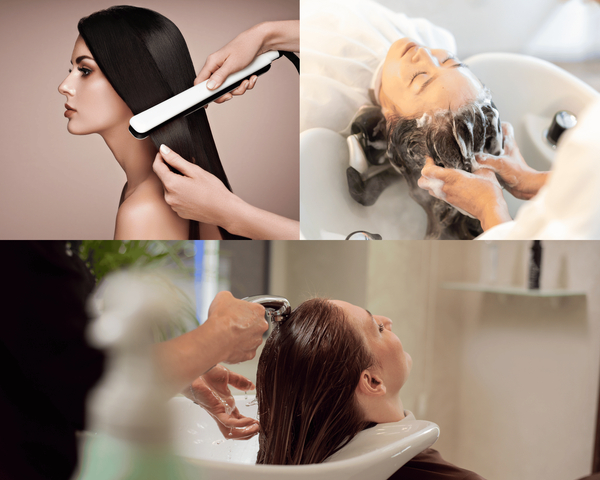When it comes to hair care, clarifying shampoo plays a pivotal role in maintaining healthy and vibrant locks. Unlike regular shampoos, clarifying shampoos are specially formulated to deep-cleanse your hair, removing the buildup of products, oils, and environmental pollutants that regular shampoos might leave behind. This deep-cleansing action is thanks to the main ingredient that sets clarifying shampoos apart from the rest.
The main ingredient in clarifying shampoo is a potent surfactant. Surfactants are compounds that help to dissolve oils and dirt, allowing them to be washed away with water. In clarifying shampoos, these surfactants are included at higher concentrations to ensure that all residues are effectively removed from the hair and scalp.
Key Takeaways:
- Clarifying shampoos are designed to remove buildup from hair, and their main ingredient is typically a strong surfactant.
- Surfactants like Sodium Laureth Sulfate or Sodium Lauryl Sulfate are common in these shampoos to effectively cleanse the hair.
- It's important to use clarifying shampoo sparingly, especially for colored hair, to avoid stripping away color and natural oils.
The Purpose of Clarifying Shampoo
When it comes to hair care, clarifying shampoo plays a pivotal role in maintaining healthy and vibrant locks. Unlike regular shampoos, clarifying shampoos are specially formulated to deep-cleanse your hair, removing the buildup of products, oils, and environmental pollutants that regular shampoos might leave behind. This deep-cleansing action is thanks to the main ingredient that sets clarifying shampoos apart from the rest.
The Star Surfactant
The main ingredient in clarifying shampoo is a potent surfactant. Surfactants are compounds that help to dissolve oils and dirt, allowing them to be washed away with water. In clarifying shampoos, these surfactants are included at higher concentrations to ensure that all residues are effectively removed from the hair and scalp.
Sodium Laureth Sulfate (SLES)
One of the most common surfactants found in clarifying shampoos is Sodium Laureth Sulfate, or SLES. This ingredient is known for its excellent cleaning properties and its ability to create a rich lather. SLES is an effective choice for removing stubborn buildup without being overly harsh on the hair.
Sodium Lauryl Sulfate (SLS)
Another surfactant frequently used in clarifying shampoos is Sodium Lauryl Sulfate, or SLS. This ingredient is slightly stronger than SLES and is highly effective in eliminating the toughest of residues. However, due to its potency, SLS can be more stripping, which is something to consider if you have colored or treated hair.
Clarifying Shampoo for Colored Hair
When it comes to colored hair, using a clarifying shampoo can be a double-edged sword. While it's beneficial for removing buildup that can make color look dull, it's crucial to choose a product that won't strip the color. Key ingredients in clarifying shampoo for colored hair should be balanced to cleanse effectively while preserving the hair's color.
Gentle Alternatives
For those with colored hair, there are clarifying shampoos that contain gentler surfactants. These alternatives can provide the necessary cleaning without compromising the hair color. It's essential to look for key ingredients in clarifying shampoo for colored hair that are color-safe and sulfate-free.
Frequency of Use
Clarifying shampoos are not meant for daily use. Overuse can lead to dryness and irritation, as well as fading of colored hair. It's recommended to use a clarifying shampoo once every few weeks or as needed, depending on your hair type and the amount of product buildup you experience.
Precautions for Colored Hair
If you have colored hair, it's particularly important to be cautious with clarifying shampoos. Always follow the manufacturer's instructions and consider using a color-protecting conditioner afterward to help maintain your hair's moisture balance and color vibrancy.
The Role of pH Levels color treated hair
The pH level of a clarifying shampoo can also impact its effectiveness and gentleness on the hair. A shampoo with a balanced pH is less likely to strip the hair of its natural oils or affect the color. When selecting a clarifying shampoo, oily skin, clarifying shampoos work hair health, consider the pH level as part of the key ingredients in clarifying shampoo for colored hair.
Natural Clarifying Ingredients
For those seeking a more natural approach, some clarifying shampoos utilize ingredients like apple cider vinegar or tea tree oil. These natural components can help to cleanse the hair without the use of harsh chemicals, making them a suitable option for individuals with sensitive scalps or a preference for organic products.
The Importance of Moisturizing best clarifying shampoo ingredients for colored hair
After using a clarifying shampoo, it's essential to reintroduce moisture to your hair. A good quality conditioner or hair mask can help to replenish any lost oils and ensure that your hair remains soft, shiny, and manageable.
Balancing Clarification and Hydration
Finding the right balance between deep cleansing and maintaining hydration is key. Look for clarifying shampoos that include moisturizing ingredients alongside their surfactants to ensure that your hair stays healthy and hydrated.
When to Use Clarifying Shampoo
Knowing when to use a clarifying shampoo is as important as choosing the right one. If you notice your hair becoming dull, heavy, or unresponsive to styling, it might be time for a clarifying treatment. Listen to your hair and use clarifying products as part of a balanced hair care routine.
Alternatives to Clarifying Shampoo
If you're hesitant to use clarifying shampoos or if your hair is extremely delicate, there are alternative methods to remove buildup. Rinsing your hair with diluted apple cider vinegar or using a baking soda paste can offer a gentler way to cleanse your hair without the use of strong surfactants.
Summary
Clarifying shampoos are a crucial addition to any hair care regimen, designed to remove unwanted buildup and restore hair's natural shine and bounce. The main ingredient in these shampoos is a strong surfactant, such as Sodium Laureth Sulfate or Sodium Lauryl Sulfate, which effectively cleanses the hair. For those with colored hair, oily scalp, excess oil, hair types fine hair, sensitive scalp hair growth, best clarifying shampoos, dry hair, best clarifying shampoo ingredients for colored hair, it's important to select a clarifying shampoo with key ingredients that are gentle and color-safe. Remember to use clarifying shampoo sparingly and always follow up with a moisturizing conditioner to maintain the health and vibrancy of your hair.
FAQ Section
Q: How often should I use clarifying shampoo on colored hair?
A: Clarifying shampoo should be used sparingly on colored hair, typically once every few weeks or as needed. Overuse can strip color and natural oils from the hair.
Q: Can clarifying shampoo damage my hair?
A: If used too frequently or if the shampoo is too harsh for your hair type, clarifying shampoo can strip away natural oils and cause dryness or damage.
Always follow the manufacturer's instructions and use a moisturizing conditioner afterward.
Q: Are there natural alternatives to traditional clarifying shampoos?
A: Yes, there are natural alternatives such as shampoos with apple cider vinegar or tea tree oil. These can provide a gentler cleanse without harsh chemicals and are suitable for those with sensitive scalps or a preference for organic products.






